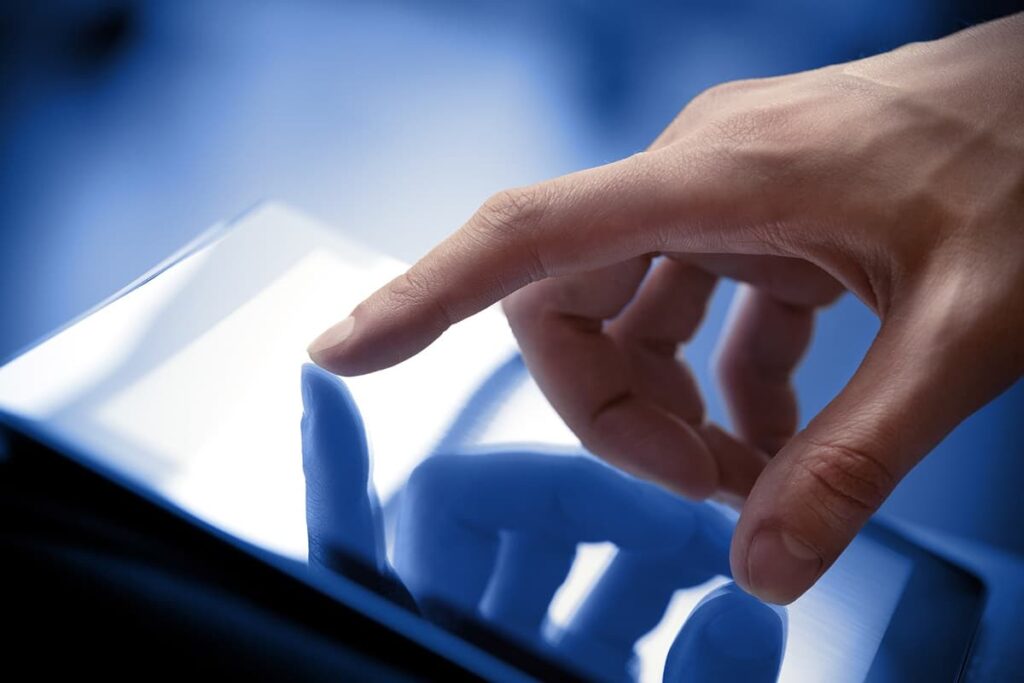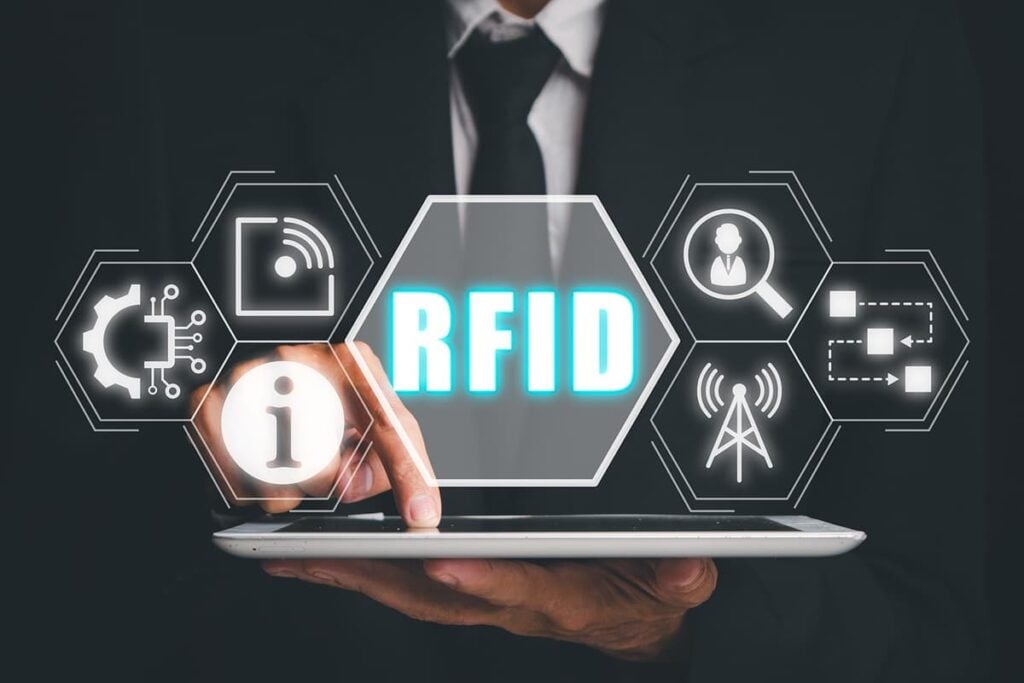AI Healthcare Startup Inspiren Addresses Bedside Care
Table of contents

It’s not every day that you start an interview with the co-founder of a startup telling you about the stroke he had a week after graduating college. But that life-altering event is certainly part of the origin story of Brooklyn-based Inspiren, a company that has brought a device to market that uses artificial intelligence to help hospitals improve quality of care right at a patient’s bedside. It’s another example of how AI is trying to upend the ways healthcare has been practiced up until now, particularly when it comes to monitoring patients.
An Inspiring Origin Story
Paul Coyne, who serves as president of Inspiren, ended up beginning his career as an analyst at Goldman Sachs (GS) with severe aphasia, or the inability to speak, as well as difficulties walking and memory issues. After reaching a place where he felt his brain was back to firing on all cylinders, Coyne decided to put his grey matter to the test and went back to school. A lot. In four years, he picked up five different degrees, including becoming a registered nurse and a nurse practitioner, before topping it off with a doctorate in nursing. He turned to the medical field as a way to find purpose and his own potential, attending both Northeastern and Columbia universities at the same time. You know, the typical 20-something slacker story.
It was during the time when he was adding half the alphabet after his name in a series of acronyms denoting various degrees that Coyne met Michael Wang, a study buddy who would be his future co-founder and CEO at Inspiren. The two men bonded quickly – males still make up fewer than 10% of nursing staff – and kept in touch as they pursued their respective careers in healthcare. For Coyne, that meant ending up at New York-Presbyterian Hospital where his business experience and clinical background seemed like the perfect fit for the medical center’s analytics group.
“At the time, I didn’t even know that this was the future – AI and everything that I’m going to get into with the company – I was just happy to have a job and that they were going to let me have Fridays to go to school and get my doctorate,” Coyne said. Wang was also working at Presbyterian, as a bedside nurse, when the two got together over coffee and hatched the idea for a new kind of device for helping hospitals monitor patients.
An Evolving Product
The original concept was pretty simple: Wang wanted to install an instrument on the wall that would alert hospital staff immediately of potential patient problems by listening to the various bed alarms emitted in the room. It would sort of be like the Shazam app for identifying music and movies, except their device would pick out ventilator or bed alarms and shoot a notification to the nurses’ station. They pitched the idea to the hospital, which liked the concept but wanted more functionality before it would devote limited plug real estate to the device. Wang and Coyne went back to the proverbial drawing board, bringing experts in computer vision, machine learning, and Bluetooth Low Energy from NASA, MIT, and elsewhere, onto the team.

The result is in. Well, more specifically, the instrument is called iN, an oval-shaped IoT device that the company calls a computer vision hybrid-sensing platform. The concept refers to the fusion of computer vision and BLE, where the former analyzes the physical environment and the latter the digital environment, according to Coyne. The wall-mounted device is packed full of other sensors for tracking sound, light, temperature – measurements that can help the hospital improve patient comfort. A data analytics engine called AIDA uses AI algorithms to unscramble all that data into useful insights.
An “Infinite” Number of Use Cases
Coyne said the data collected by iN offers an infinite number of use cases. They started with something they knew well – nursing. They created a mobile app to gamify the care process. The app awarded nurses for spending time with patients or for being the fastest to answer a call bell, because iN can detect the presence of a staff member in the room.
“Our initial use case was to just reward nurses for doing their job in a way that they do, but then they don’t necessarily get credit for it.” – Coyne
But that was just the beginning. Machine learning algorithms can now take the incoming stream of data to understand what’s actually happening in the room. For example, iN can identify when a nurse is turning a patient in bed to prevent her from getting a pressure ulcer or detect when a patient is moving in a manner that could lead him to fall. The computer vision part of the platform is so sophisticated that it can analyze the pressure points of the patient in bed and alert a nurse if the person has not been turned in a certain amount of time. “We’re able to reduce pressure injuries,” Coyne noted. The data can also be leveraged for more general hospital operations, such as assessing patient workloads and staffing accordingly.
Privacy is Paramount
iN is both an IoT device that can integrate data from other connected devices and a nifty piece of AI hardware that does edge computing. That means most of the behavioral analytics – its ability to discern people and movement – are processed at the base station. Keeping it “local” helps ensure patient privacy, which is paramount in healthcare. There’s no facial recognition involved in this case, as the computer vision system actually “sees” the people more like stick figures, Coyne explained. iN is also sophisticated enough that it can track behaviors to specific beds in facilities with multiple patients in one room. The only data pushed to the cloud is related to the actual behaviors being detected, such as turning a patient in bed.
“That made the tech more challenging than it would have been if we were just doing this in a retail store, but healthcare is a unique industry.” – Coyne
Testing the Tech
Another nurse with a PhD from Columbia University, Carolyn Sun, is currently doing research on the effectiveness of iN at both a stroke and medical surgery unit within one of the nation’s top five hospital networks, according to Coyne. The study has a number of goals, such as determining whether the device can decrease patient falls and increase patient satisfaction. The hospital is also tracking improvements in hourly rounding by nurses, bedside shift report compliance, and call bell response times, among other parameters.
While final results have yet to be published, the eight months of the pilot program have shown “statistically significant improvements” in a number of areas, including:
- Increases in hourly rounding and bedside reporting
- Reductions in call bell volume due to increased rounding
- Improved call bell response times due to call bell alerts on mobile devices
- Substantial decreases in falls on both hospital units in Q2 2019 compared to Q2 2018
- Statistically significant trending increases in percentage of patients responding “always” to the follow-up survey question, “Call button help soon as wanted it”
Market Moves
While Inspiren’s flagship product was originally developed as a device to assist nurses in a hospital setting, iN will also eventually be marketed in related healthcare settings such as assisted care facilities and nursing homes, as well as the home market, where there’s been a push in elderly care using AI and robotics. In those cases, especially in an assisted care facility or nursing home, the focus shifts away from the caregiver and to the patient. For example, iN could track how frequently someone gets out of bed at night to use the bathroom, which could be an indication of bladder or kidney problems. Or it could detect a change in sleeping patterns, such as someone who used to sleep six hours a night is now snoozing for 12 or more.
“We’re actually able to analyze their own behavior trends.” – Coyne
Those sorts of insights could eventually shift iN from being a more passive monitoring tool to a diagnostic one. Of course, such a shift in purpose would eventually require FDA approval as a medical device. And that requires money.
Financials
Coyne is reticent to talk about financials at this point. We do know that Inspiren raised $3.5 million almost exactly a year ago. Among the investors is a New Yawk City venture capital firm called Story Ventures, which has made about a score of bets in early-stage startups “with big visions leveraging technology and the proliferation of data to change the way people interact with the world.” The portfolio definitely leans AI and big data, and includes several other digital health companies, such as AI healthcare startup Nanit. Also based in NYC, Nanit has developed a smart baby monitor that tracks a child’s sleeping patterns for insights into how everyone in the family can get a better night’s sleep.
Conclusion
Most of us have heard the saying that “hardware is hard,” meaning that it is inherently more risky than software because it takes time and a ton of cash to bring a product to market. The fact that Inspiren was able to raise a modest amount of traditional capital is somewhat amazing and speaks to the viability of iN (and maybe a bit to the hype surrounding anything to do with AI in healthcare at the moment), as more than half of “gadget” startups initially raise their first funding on a crowdfunding website, Wired reported. We also like the fact that the technology was designed and is being tested by the very medical professionals who would use it rather than another serial entrepreneur with a solution in need of a problem to solve. And Inspiren is trying to solve a fundamental problem in healthcare today: the quality of bedside care.
Sign up to our newsletter to get more of our great research delivered straight to your inbox!
Nanalyze Weekly includes useful insights written by our team of underpaid MBAs, research on new disruptive technology stocks flying under the radar, and summaries of our recent research. Always 100% free.














